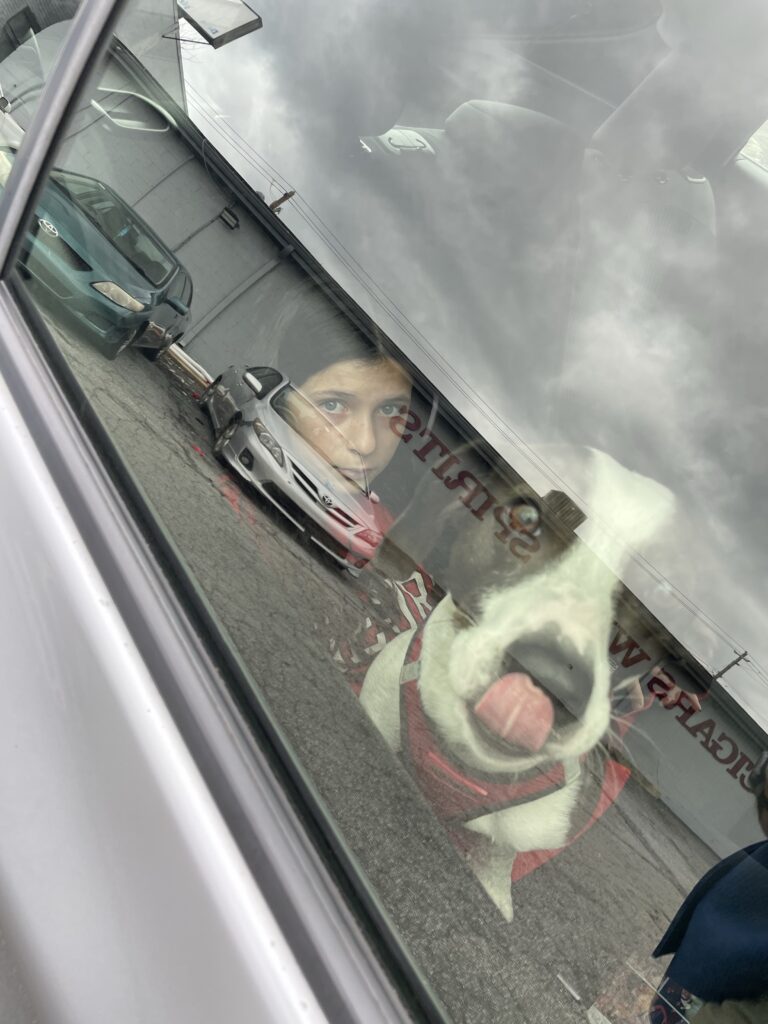
Child and dog in the backseat



12 years ago I visited Kenya for CARE to learn about how its community savings programs were going digital. The groups save money together and make loans to members of the group to buy things like seeds, tools, or to make school tuition payments that come due before the harvest. Before the harvest is when farm families often have the least amount of money. The repayment rate for these loans, with interest, is near 100%.
CARE’s community savings groups worked so well that by the turn of the last decade success spawned a problem in some communities: too much cash. The savings groups members didn’t like that months of their savings sat in a locked metal box. They were worried a boxful of cash would tempt thieves.
The English speaking members of the groups in Kenya I spoke to referred to the problem of having too much cash as excess liquidity. Their solution to excess liquidity was improvised and ingenious. They’d started taking their cash to local shop owners who operated M-Pesa terminals. M-Pesa was (and is) a mobile phone-based payments system. Users load their accounts with cash to send electronic payments to other M-Pesa users. It’s like Venmo, PayPal or Cash app, but it was 1) all done by SMS on pre-smart mobile phones 2) and it was happening a decade before mobile payments took off in the U.S.
The groups I visited were in small towns, 2-3 hour drives from my hotel. During one long drive I asked the CARE Kenya co-worker driving me if we could stop somewhere with a restroom. “I have excess liquidity,” I said.
12 years later I still say “excess liquidity” to myself when I have to pee, but never aloud because in the time it would take to explain I’d wet myself.


From the finest living interpreter of the songs of Burt Bacharach and Hal David, this is Raindrops Keep Fallin’ On My Head in a medley with Five Little Monkeys.
Thank you Burt Bacharach and Hal David for more songs and recordings I love that anyone whose name isn’t Paul McCartney or Andy Partridge.
@andishehn It really doesn’t. #simplythebest #lifeisgood #publictoilet #lifelessons ♬ The Best – Tina Turner
For the January 2023 issue of Atlanta Magazine I spoke to the Darin Givens (@ATLUrbanist), Bem Joiner (Atlanta Influences Everything), Kelly Parry (Atlanta Downtown Neighborhood Association) and Rohit Malhotra (Center For Civic Innovation and the pending makeover of Downtown Atlanta and who the neighborhood should be for.
A snippet:
Why has the intown residential influx of the past two decades skipped the part of the city that actually has the physical infrastructure to support growth? Kelly Parry, a downtown resident who sits on the Atlanta Downtown Neighborhood Association board, thinks office tower owners’ interests have thwarted people-friendly improvements. She points to the city’s March 2022 decision to remove a pedestrian lane from Peachtree Street in front of Peachtree Center, a fortress complex infamous for its hostile-to-streetlife elevated people-moving tubes. “If Tim Keane [Atlanta’s recently departed head of planning] can’t say Hey, y’all, let’s pedestrianize this one lane on a street that’s generally dead, then the problem isn’t that we don’t know how to do urbanism, or that there’s no appetite for it. It’s that we have powerful people and a culture actively preventing it,” Parry said.
You can read the rest for the low low price of free on Atlanta Magazine’s web site, but you should subscribe to Atlanta Magazine.

ChatGPT might take my job, but it doesn’t look like it’s going to my hobby anytime soon.
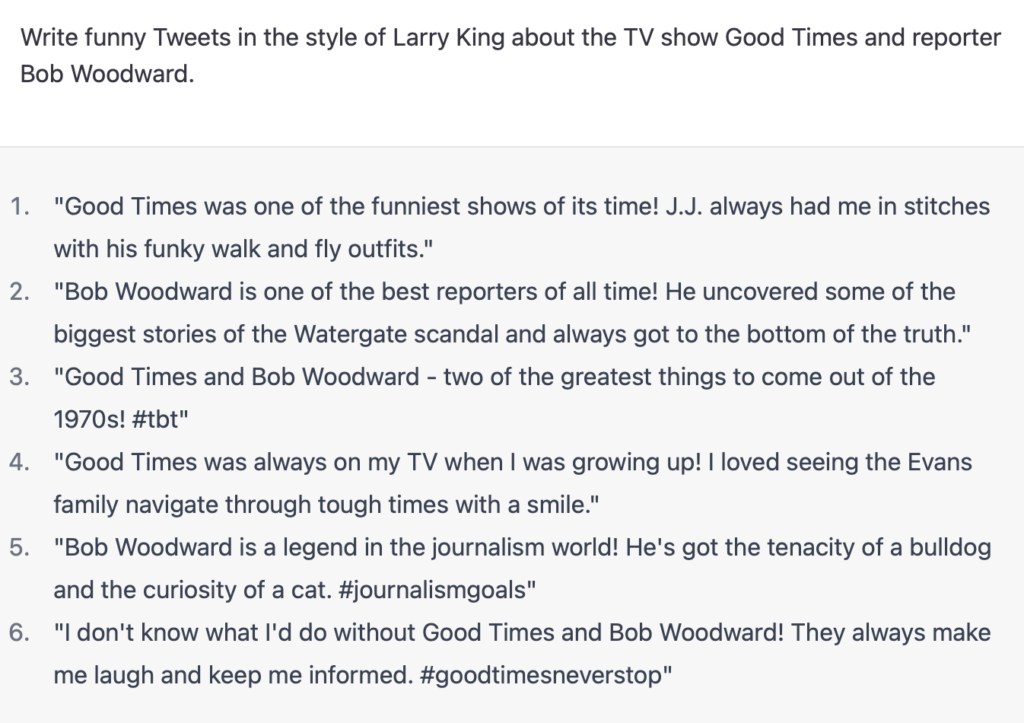
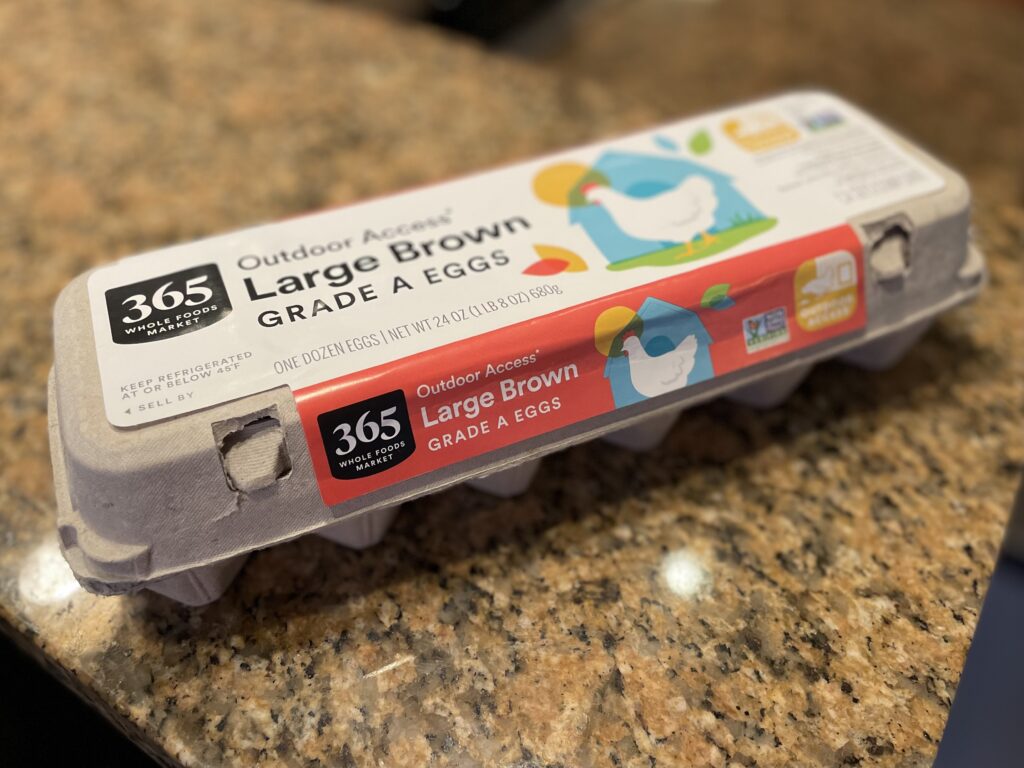


Andisheh and Timmy join you on your dog walk with thoughts about black birds, a weird ATM, the majesty of bare trees and a great spot for peeing. It’s the episode 1 of Oakhurst Dog Walker’s Companion. Don’t encourage me unless you want an episode 2.
Listen below, in Apple Podcasts, or subscribe in your favorite podcast app.
Here’s the short essay in the middle of the podcast, including the images of the river and trees.
Oakhurst in January and February
Oakhurst is never oppressively gray. We have gray days. We have gray weeks. January sits in the middle of our wettest season, so we have more cloudy days than usual.
But Oakhurst is not Seattle, or northern England.
In January our fescue is still green. Trendy exterior paints of 2019 still pop. We still see the blue sky. And even though our days are short, the golden hour can be extra golden in January because the short days make the gold a little more precious.
Still, Januarys are as gray as our not-gray gets
The flowers are nearly all gone. I’m not seeing any azaleas or camellias this January. December’s once in a decade deep freeze seemed to shock them to into actual winter sleep this year.
Daffodil stems and leaves are already poking out, but we’ve got a couple more weeks before they bloom en masse. I saw a solitary daffodil flower early in the month. It looked rough. Poor kid arrived at the party too early.
Even though the colors that can make Oakhurst beautiful are taking PTO this month, gray is ok. There’s beauty in gray, and brown and black.
Our leaf canopy is gone so you can look up at the trees and admire their outline without the leaves in the way.
Point your phone and snap a photo. Make it black and white so you can concentrate on the shape.
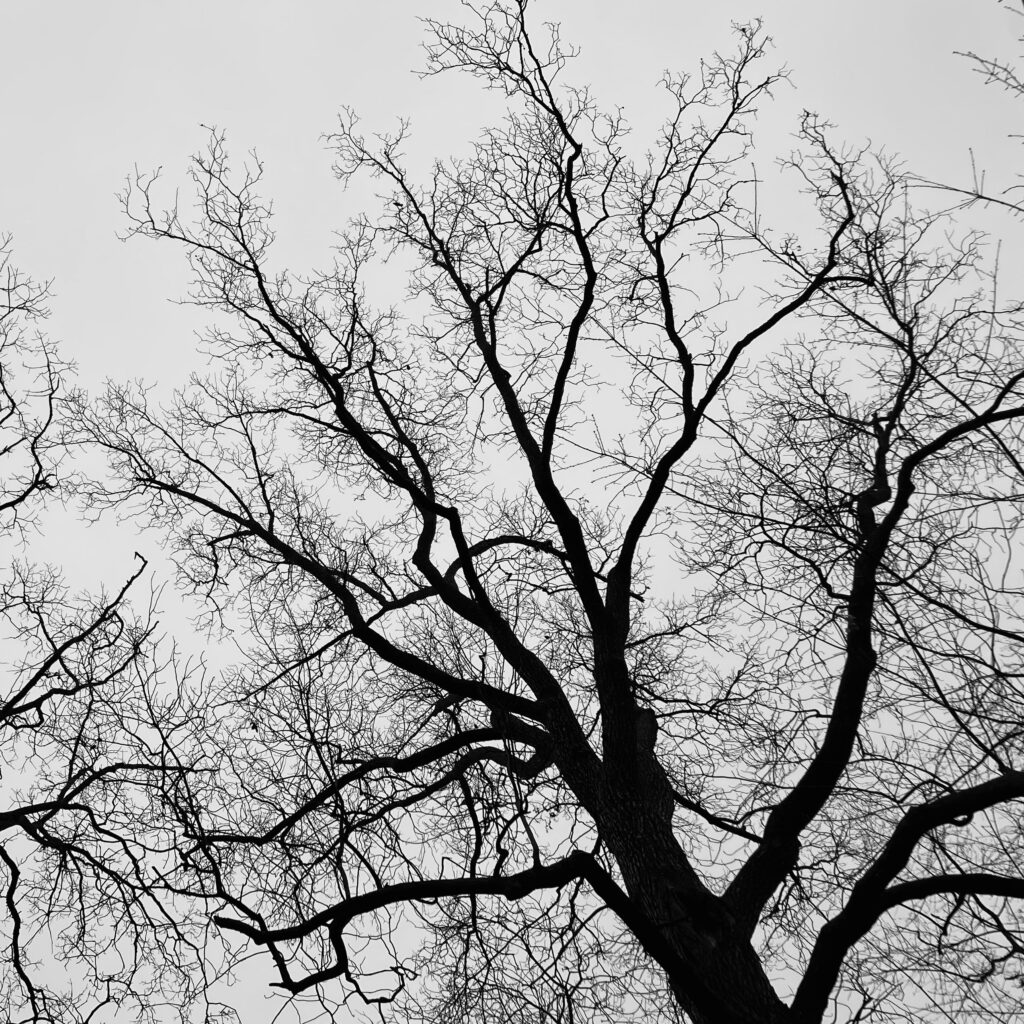
If the sun isn’t behind you might get a silhouette akin to an intricate pencil drawing. It reminds me of an artist’s rendering of the human nervous system, the trunk is the spine and the most distant branches and twigs, the nerves in the toes and fingers.
Looking up at bare tree branches against the sky also reminds me of satellite images of dry river beds.
The similarity of the shape is uncanny. Maybe that’s because trees and rivers do the same thing. They move water. The difference is, they move them in the opposite direction.
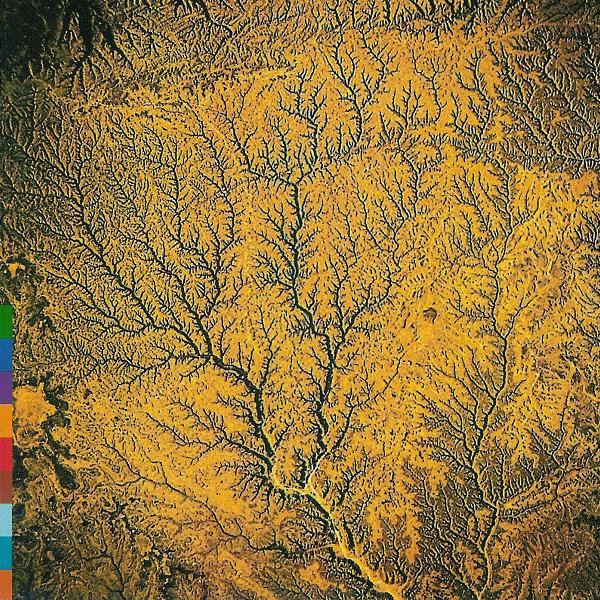
Water on the ground flows downhill from the branches of rivers, the creeks and streams, to trunk of the river. In a tree, water flows up from trunk to branch to leaves, where it’s returned to the clouds as water vapor
It’s only in the satellite age that people like me can clearly see the symmetry between rivers and trees.`
I don’t know enough about religion to name one here, but I’d bet several nature-centric religions understood the symmetry without the benefit of satellites.
“Nature is a language. Can’t you read?” Morrissey said that. He wasn’t talking about trees though.